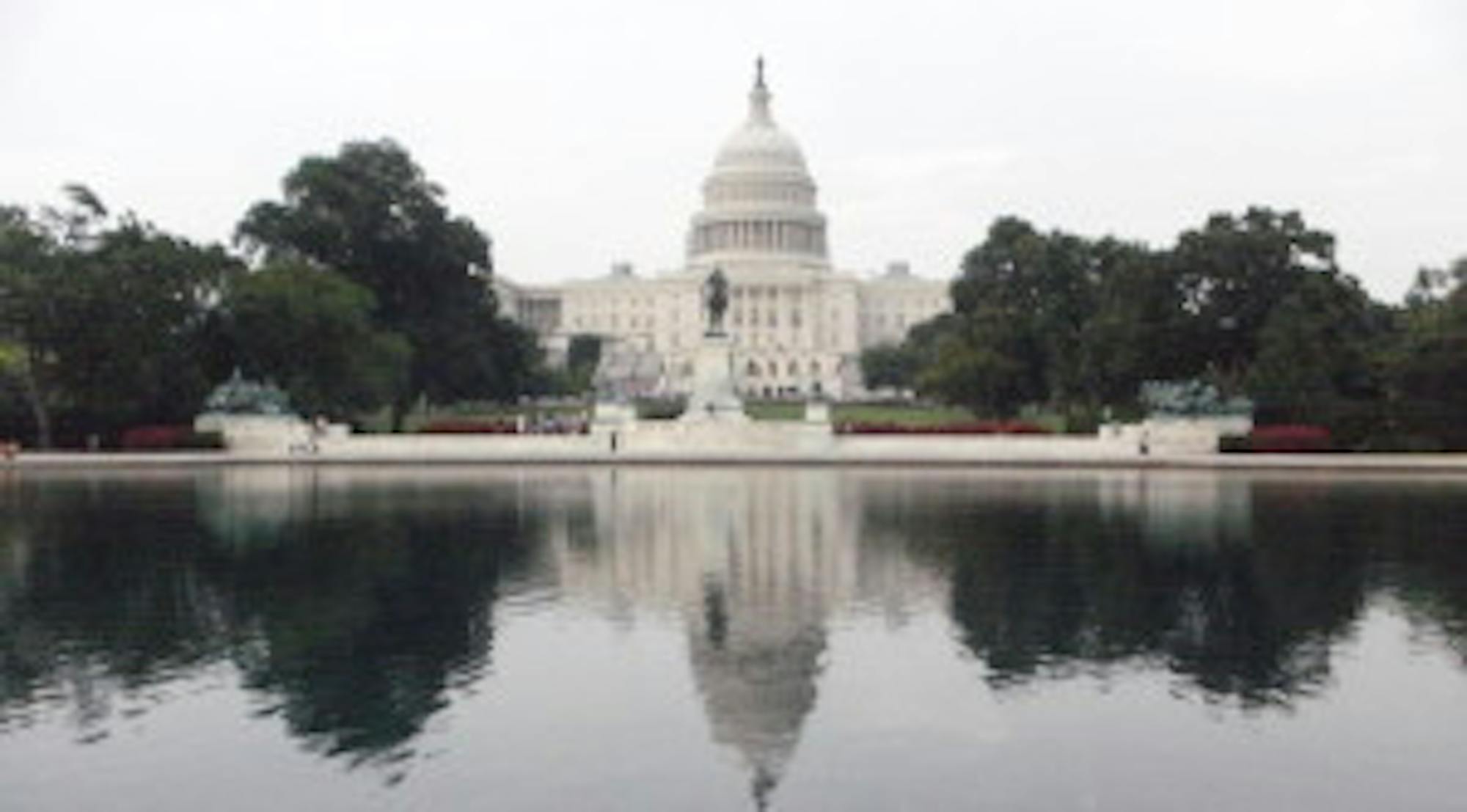Political polarization and partisanship have become more apparent in recent years with a deepening pressure for U.S. citizens to align themselves with either the Democratic or Republican Party. However, the U.S., with more than 300 million people from different backgrounds, is far too diverse to be only represented by two parties.

The U.S. uses a winner-take-all system for electing members to the House, meaning that from each district, only the representative with the most votes gets elected. This system encourages a two-party electoral process. Additionally, the winner-take-all structure disadvantages third parties because they don’t have a way of winning seats from the established parties. Voters don’t want to waste their votes on a candidate that isn’t likely to win. Since newly established or minority-supported third parties can’t get a majority of votes, they can’t win any seats. This system essentially secures the established parties’ electoral wins.
Even though the U.S. Constitution does not specify how members of the House of Representatives are to be selected, in the first half century of the country’s history, nearly the majority of the House members were selected through multi-winner districts. In 1967, Congress passed a law to prohibit the multi-member district system. The single-member district system and two-party system do not align with the vision of the Constitution. The founding fathers were wary of factions and George Washington in his farewell address warned us “in the most solemn manner against the baneful effects of the spirit of the party.” James Madison stated that “the public good is often disregarded in the conflicts of rival parties,” and in the two-party system, the rivalry between parties drags the country into gridlock. Even though the founding fathers were opposed to parties, they went on to form parties themselves, and the Constitution never abolished parties in the name of political liberties. Political parties are an important part of politics and they are not going anywhere; however, only having two subjects us to the tyranny of the majority of the Democratic or Republican Party.
The House of Representatives should be reflective of the citizens. It should mirror the ideas, backgrounds, values and needs of every American citizen and not cater to a certain majority. The House should also be a place that represents minorities. The current single-member district system harms ideological minorities and third parties because they are unlikely to get the majority of the votes needed for representation in the system. Switching to proportional representation with multi-member districts will be a huge step toward achieving full representation of the U.S. population. Instead of giving seats to a party that received 51% of the votes and ignoring the votes of nearly half of the electorate, proportional representation will allow a fair representation of all groups. With proportional representation, we will be encouraging not only ideological minority representation in the House but also their political engagement. When minority groups know they have the chance to get elected and their votes are valued, the voter turnout rate will increase.
With proportional representation, we can expect to have debates on issues we have neglected for years and enact a wider range of policies. For example, third parties like the Green Party can ensure the House discusses and finds solutions for environmental issues. More representation in the House will change the issues we are focused on and lead to more political inclusion. It can also change how we perceive American politics and the party system. Proportional representation can help save the U.S. from party divisions, gridlocks, and decisions that are only being made to counter the other party. Instead of two parties competing with each other, there will be several parties with different goals working together. It will encourage parties to collaborate, seek a majority in most cases, mutually tolerate each other and compromise. Since no party will be able to pass a bill without support from other parties, we will see bi-partisan bills that are more inclusive and reflect the needs of a wider range of people. With proportional representation, we can save the U.S. from deep political polarization and free democracy from the claws of elephants and donkeys.
Switching to proportional representation will also solve the problem of partisan gerrymandering. The parties that control the legislature enjoy the benefit of drawing districts that will benefit their party. Even though a state might have more people who vote for Party A, the legislature can draw districts in a way that will make sure that Party B wins. For example, from 2012 to 2016, citizens from Michigan voted for the Democratic Party 52% of the time for the House of Representatives however, Democrats received only 44% of the seats due to partisan gerrymandering. With proportional representation, every vote will reflect the percentages of representation, gerrymandering won’t affect the outcomes and we will eliminate this unfair practice of partisan gerrymandering.
To ensure fair representation, improve the functionality of politics and save the American democracy, the U.S. should abolish the single-member district system and use multi-member districts under proportional representation. The House is the body that represents the will of the American citizens and it should strive to reflect the population as much as it can. By advocating for better forms of representation, the U.S. can finally free itself from the claws of the two-party system.
Kardelen Ergul (24C) is from Istanbul.





